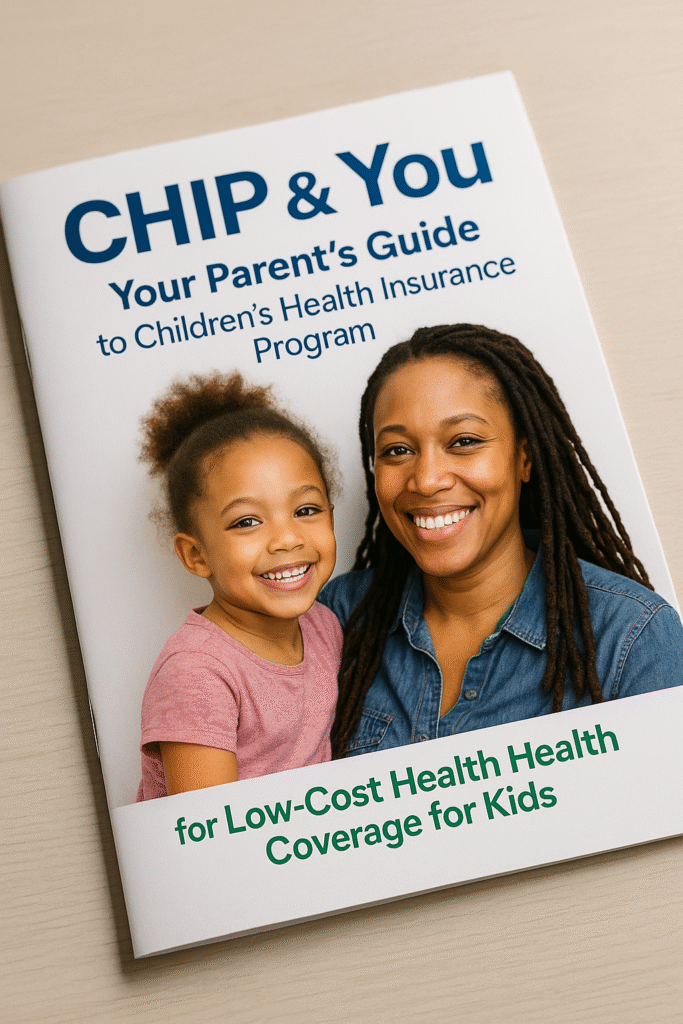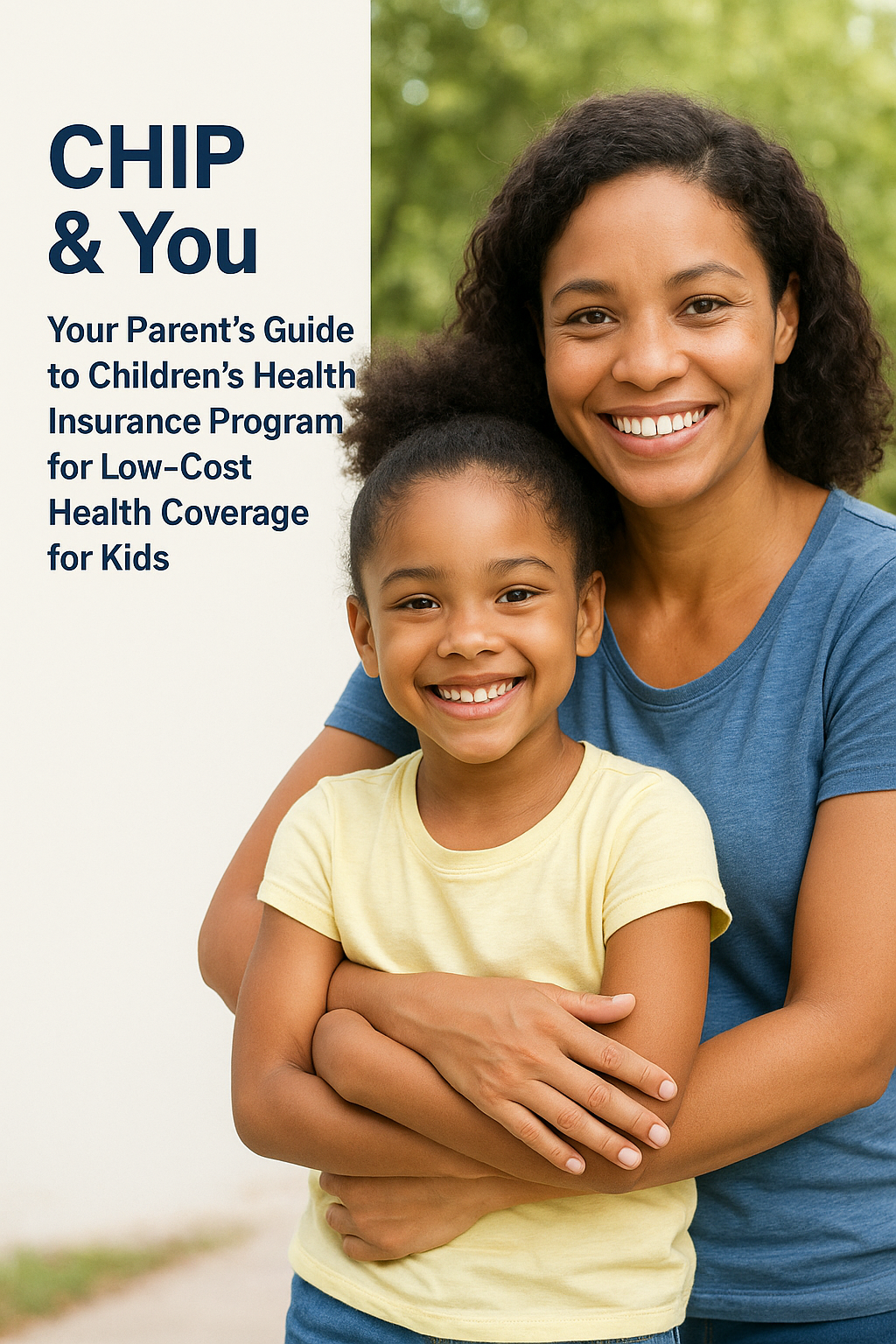Finding affordable health coverage for your children can feel overwhelming—especially when navigating complex government programs. The Children Health Insurance Program (CHIP) offers low-cost or free health insurance to millions of American kids whose families earn too much to qualify for Medicaid but still need financial support. In this interactive, step-by-step guide, you’ll learn who qualifies, how to apply, renew, and what benefits are covered—so you can confidently secure health coverage for your little ones.

Why the Children’s Health Insurance Program Matters
- Affordable coverage: Families pay little or no monthly premiums, depending on income and state.
- Comprehensive benefits: Includes checkups, vaccines, dental, vision, prescriptions, and more.
- Peace of mind: Prevents costly medical bills and ensures children receive regular care.
Interactive prompt:
- Have you delayed doctor visits because of cost?
- Would predictable, low-cost premiums help you plan your budget?
If you answered “yes,” CHIP may be the solution your family needs.
Who Qualifies for CHIP?
Eligibility is based on household income, age of the child, and state guidelines. While details vary by location, these core criteria apply nationwide:
- Age: Children up to age 19.
- Income: Family income too high for Medicaid but below your state’s CHIP threshold (commonly 200–300% of the Federal Poverty Level).
- Residency & Citizenship: Must be U.S. citizens or qualified non-citizens and state residents.
- Not Eligible for Employer Coverage: Some states allow CHIP even if employer insurance is available but unaffordable.
Self‑Check:
- How many children do you need to insure?
- What is your total household income?
- Does your state offer CHIP separate from Medicaid or combined under Medicaid expansion?
Use this information to estimate your eligibility before applying.

Step 1: Locate Your State’s CHIP Program & Income Limits
Each state administers CHIP differently—some as a standalone plan, others as part of Medicaid.
- Visit InsureKidsNow.gov: The official federal portal lists state programs and income guidelines.
- Select Your State: View program type (CHIP-only vs. Medicaid expansion) and income thresholds.
- Note Key Details: Premium amounts, application deadlines, and renewal processes unique to your state.
Interactive tip: Bookmark your state’s CHIP website for quick reference during the application process.
Step 2: Gather Necessary Information & Documents
Preparing ahead ensures a smooth application. You’ll generally need:
- Child’s information: Name, date of birth, Social Security Number (if available)
- Parent/Guardian details: SSN, date of birth, employment status
- Proof of income: Pay stubs, tax returns, unemployment benefits
- Proof of residency: Utility bill or lease agreement
- Immigration status (if applicable): Green card, visa documentation
Tip: Scan or photograph each document and store securely on your device to upload online.
Step 3: Complete the CHIP Application
Depending on your state, you can apply:
- Online: Via your state’s health department or InsureKidsNow.gov application link.
- By mail or fax: Download a paper application, fill in details, and send to your state office.
- In person: Visit your local Medicaid/CHIP office or community health center.
- By phone: Call your state’s CHIP hotline for guided application assistance.
Interactive reminder: Record the date you submit to track processing timelines (typically 45 days).
Step 4: Verification & Eligibility Interview
After submission, states may require verification steps:
- Document Checks: Agencies review your uploaded or mailed documents for completeness.
- Follow‑Up Interviews: Some states schedule phone or in-person interviews to clarify details.
Pro tip: Keep copies of everything you submit and note every phone call or correspondence date.
Step 5: Enrollment & Coverage Start Date
Once approved, your state will send an eligibility notice containing:
- Coverage start date: Often retroactive to application date if approved on time.
- Premium details: Monthly cost (if any) and payment options.
- Member ID card: Used at doctor’s offices and pharmacies.
Action item: Save digital images of the ID card on your phone and order physical copies if offered.
Covered Services Under CHIP
While benefits can differ by state, most CHIP plans include:
- Preventive Care: Well-child visits, immunizations, screenings
- Outpatient Services: Doctor visits, lab tests, X-rays
- Inpatient & Emergency Care: Hospital stays, ER visits
- Prescription Drugs: Wide formulary of generic and brand-name medications
- Dental & Vision: Checkups, cleanings, eyeglasses, etc.
- Behavioral & Mental Health: Counseling, therapy services
Interactive hint: Consult your plan’s Summary of Benefits online for specific copays, visit limits, and prior-authorization requirements.
Step 6: Managing Your CHIP Coverage
Keeping coverage active involves:
- Premium Payments: Pay any required monthly premium through your state’s portal or by mail.
- Reporting Changes: Income, address, or family composition changes within 30 days.
- Renewal Process: Typically annual; states may send a reminder 60 days before expiration.
- Appeals & Grievances: If your application is denied or a service is denied, use your state’s appeal procedures.
Reminder: Set calendar alerts for renewal dates and premium due dates to avoid coverage gaps.
Tips for Maximizing Value from CHIP
- Use In-Network Providers: Saves on out-of-pocket costs.
- Schedule Preventive Visits: No-cost well-child checks keep your child on track.
- Understand Co-pays & Limits: Review your plan to avoid unexpected bills.
- Take Advantage of Extras: Some states offer telehealth, nutrition programs, or vision screenings at no extra cost.
Pro tip: Join parent forums or state health department newsletters for updates on program enhancements.
Helpful Official Links for Cross‑Verification
To access program details, apply, or find answers, click through these official resources:
- Insure Kids Now (CHIP Home): https://www.insurekidsnow.gov
- Find Coverage for Your Family: https://www.insurekidsnow.gov/find-coverage-your-family
- CHIP FAQs: https://www.insurekidsnow.gov/find-coverage-your-family/frequently-asked-questions
- Find a Dentist Locator: https://www.insurekidsnow.gov/find-a-dentist
- State CHIP & Medicaid Profiles: https://www.medicaid.gov/state-overviews/state-profiles
- Federal CHIP Overview (CMS): https://www.medicaid.gov/chip
- HealthCare.gov CHIP Information: https://www.healthcare.gov/medicaid-chip/getting-medicaid-chip/
Frequently Asked Questions (FAQs)
Q: What if my family income changes mid-year?
A: Report increases or decreases within 30 days of the change. Your premium or eligibility may adjust accordingly.
Q: Can my child have both CHIP medical and separate dental coverage?
A: Yes—many families pair CHIP medical benefits with standalone dental plans for broader coverage.
Q: How long does coverage last?
A: Coverage typically runs for 12 months and is renewed annually, as long as eligibility requirements are met.
Q: Are mental and behavioral health services covered?
A: Most CHIP plans include counseling, therapy, and behavioral health—check your state’s Summary of Benefits for specifics.
Final Checklist to Apply for CHIP to Apply for CHIP
Below is a clear, step‑by‑step list to ensure you complete every requirement for your child’s CHIP application:
- Verify Eligibility
- Confirm your child’s age (under 19) and household income fall within your state’s CHIP limits.
- Identify Program Type
- Determine if CHIP in your state operates as a standalone program or through Medicaid expansion.
- Gather Required Documents
- Child’s details: full name, date of birth, Social Security Number (if available)
- Parent/guardian info: SSN, employment status
- Proof of income: recent pay stubs, tax returns, benefit award letters
- Proof of residency: utility bill, lease/mortgage statement
- Immigration documents (if applicable): green card, visa papers
- Access the Application
- Visit https://www.insurekidsnow.gov or your state’s CHIP portal to begin your application.
- Complete the Application
- Accurately fill out all sections, including household composition, income, and expenses.
- Submit Supporting Documents
- Upload digital copies online or mail/hand-deliver paper documents to your state CHIP office.
- Schedule & Attend Interview
- If requested, participate in a phone or in-person interview within 45 days of applying.
- Review Approval Notice
- Check your coverage start date, any premium requirements, and Member ID details.
- Activate Coverage
- Save digital and physical ID cards; set up premium payment methods if applicable.
- Set Renewal & Reporting Reminders
- Add calendar alerts for annual renewal deadlines and report income or address changes within 30 days.
Disclaimer: This guide is for informational purposes only and does not constitute legal or medical advice. Always consult your state CHIP office or official federal resources for personalized assistance. All images used in this article are royalty‑free or licensed for commercial use and are provided here for illustrative purposes.
